BP_071712_007.pdf

Broadcaster Press 07
July 17, 2012 www.broadcasteronline.com
Grant made way for Irene-Wakonda
students to dig into gardening
by Laurie Fritsch, Program
Clerk for USDA
Natural Resources
Conservation Service
The students who
took part in the IreneWakonda Public
Library Summer
Reading Program
enjoyed books about
dreams, wishes, and
topics related to what
they dream about doing
one day, according to
Carla Ostrem, Librarian
of the Irene-Wakonda
Elementary School.
Ostrem, who’s been
on staff since 2005, said
“Dream Big . . . Read”
was the theme for this
year’s four-week
program held each
Tuesday morning in
June. Ostrem and the
students were able to
take part in a new
gardening series this
year made possible
through a mini grant of
$125.00 from South
Dakota State University,
secured by featured
guest Grace Freeman,
Vermillion, SD, a local
Master Gardener and
landowner.
Freeman said, “This
grant was a perfect fit
because the school
recently put up a 20-ft.
x 24-ft. unheated Hoop
House. Funds from the
mini-grant were used to
purchase supplies to
complete the garden
EveryW ednes at Razi ’
day
els
Res
taurant i Verm ilon ..
n
li .
“G reat W i & Som e
ne
D am “G ouda”C hees
e”
Brng i a sgniiantot or a f i
i n i fc
her
rend…
Choos 6dif entw i sand enj s e
e fer
ne
oy om
c plm ent yc e e
om i ar he s !
per couple
$
4pm t close
o
O nly
Sum m er
B eer Tas ng
ti
W e ,J y18t •7:
d. ul h 30pm
Fe urng 7Sum m erBe s
at i
er
I l ng: nenkuge
ncudi Lei
l
Sum m erShandy Bl
, ue
M oon,2Hom eBr s
ew
& M or !
e
15
Bi s w i fi si t ar a!
gge t ne lght n he e
Restaurant
13 W. Main St., Downtown Vermillion • 624-9696
series activities, some of
which we completed in
the Hoop House for the
Library’s reading
program.”
Ostrem scheduled up
to two-hours of student
activities with time for
Freeman to complete a
garden lesson each
week. Ostrem
explained, “Sometimes I
run of out time. I often
have more ideas than
what we have time to
finish.” Each Tuesday,
Ostrem started off the
morning reading a story
to the kids, followed by
a few minutes to make a
craft related to the
story. This year the
students made Dream
Catchers, Dream Jars
and the like. Next they
enjoyed a snack break
before they spent time
to look for a book or
two to take home to
read during the week.
“If students brought
their books back each
week they were granted
a trip to my Treasure
Box to pick out a prize.”
As Freeman
introduced kids to
gardening, their first
lesson covered soil.
Freeman asked
students, “Is there air in
soil? To find out, first
Freeman had them split
up into seven small
groups. Each group put
a cup of boiled water
that had cooled, plus
one cup of garden soil
into a quart-sized jar.
The experiment proved
successful as they
witnessed the answer
for themselves. Freeman
said, “The kids
observed air bubbles
rising from the soil.”
Then Freeman asked
students, “Do bugs live
in the soil?” To find out,
each team put soil in a
6-oz. container. Several
minutes later the
students discovered
very active little critters
in the soil.
To wrap up the first
lesson, they covered
how plants grow from
healthy soil, and how
worms make compost
when they digest food
scraps. Students also
created worm
composters to take
home using Red
Wriggler Worms
purchased from Jim’s
Worm Farm at
http://unclejimswormfa
rm.com.
Freeman referenced
several books to prepare
for this session. One she
bought with grant funds
and donated to the I-W
Elementary School
Library was Mary
Appelhof ’s book,
“Worms Eat My
Garbage.”
Lesson Two focused
on plant health through
root development. Each
student placed gel balls
and a rooting plant into
a clear glass. Once
home they filled the
The Wakonda Park, Wakonda, SD, made the perfect setting
for Jeff Loof, District Conservationist of Clay and Union
County USDA Natural Resources Conservation Service field
offices in Vermillion and Elk Point, SD, to talk to students in
the Irene-Wakonda Summer Reading Program, about soil
health and the work of earthworms do to keep soil fertile.
Grace Freeman, Master Gardener and local landowner,
standing behind Loof with her camera, helped secure a
grant from South Dakota State University, Brookings, SD, to
present a new four-part gardening series for this year’s reading program.
(photo by Laurie Fritsch, Program Clerk for the
USDA Natural Resources Conservation Service,
Vermillion, SD)
glass with water and
were able to notice as
the root system
developed. In addition,
the kids created an
environment to observe
root growth by putting
gel beads into a glass
cup, and placed plant
cuttings into the cup.
Freeman encouraged
students to work up a
garden at home. To get
them started, each
family represented
received seed packets
donated by the State
Library Military Garden
Project.
During the third
lesson students covered
the sights, smells and
tastes of the garden.
Freeman said, “A ‘Tea
Pot’ filled with plants
used in making tea
including Lemongrass,
Mint, Chamomile, and
Stevia, was donated to
the school. The kids
smelled and chewed on
the various leaves to see
what they tasted like.
Next those interested
drank Iced Tea made
with herbs.
Asparagus Ferns
were also available for
the kids to feel and
discuss. They were
invited to eat freshly
steamed Asparagus that
Freeman prepared.
Ostrem said, “The kids
that like Asparagus just
loved it.” This fall, the
Asparagus will be
planted in the school’s
garden.
For the last session of
the garden series, Jeff
Loof, District
Conservationist of Clay
and Union County
USDA Natural
Resources Conservation
Service field offices in
Vermillion and Elk
Point, SD, met Freeman
and the students at the
Wakonda Park. Other
kids at the Park for
swimming lessons that
day were invited to join
in. Loof talked about
why it’s important to
keep the soil healthy
and the significance of
the work that
earthworms do. As he
spoke, he invited the
kids to come up and get
a worm to hold.
“Earthworms move
through soil and break
down organic matter
like dead plants and
animals, animal waste
and leaves. We rely on
these worms to keep the
earth very fertile,” he
said.
Loof said, “One thing
worms don’t like is
sunlight. Worm holes
sometimes get flooded
when it rains, so worms
crawl out of the ground
and lie on the sidewalk.
They’re sensitive to
ultraviolet rays. Worms
can be hurt from too
much sun. If they lay
there too long the
sunlight can kill them.
That’s why they like to
stay underground
where it’s dark.”
Then he instructed
the kids to let their
worms go in a shady
spot to crawl back into
the soil. “Would you
like to pretend you’re a
worm and check out the
Worm Tunnel?” he
asked.
The kids had
anxiously waited for his
invitation to do so, and
shouted “Yeah!”
Responding to their
enthusiasm, he said,
“It’s time to crawl
through the Worm
Tunnel!” The kids had a
blast taking turns one
after the other. But one
adventure through the
Worm Tunnel just
didn’t satisfy. In the
final moments as the
first-ever gardening
series and the summer
reading program drew
to a close, the kids not
only dreamed of what it
was like to be a worm,
they crawled through
the Worm Tunnel to
experience it for
themselves.
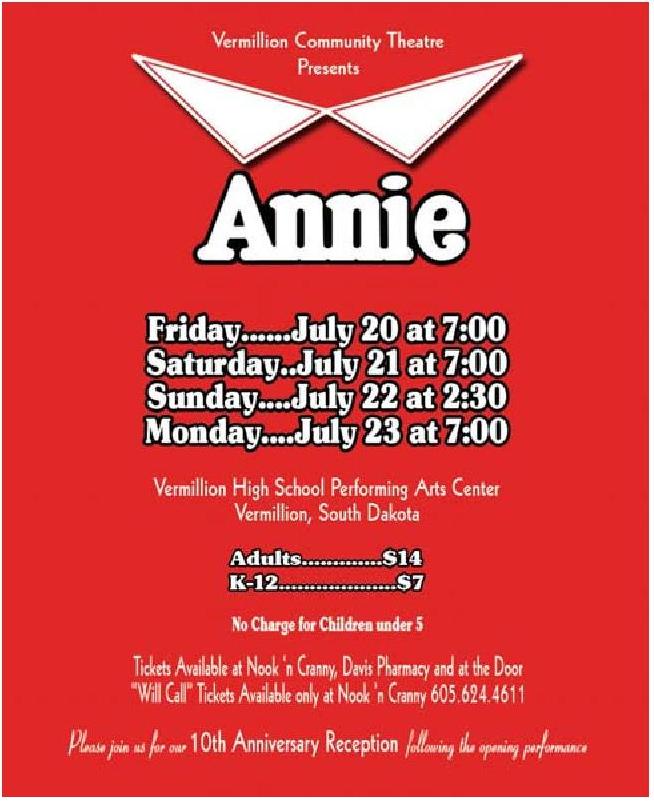

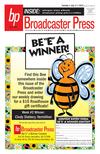

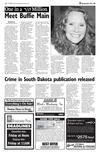

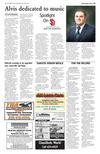

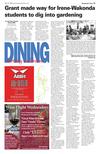



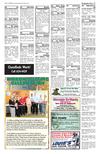

 Previous Page
Previous Page






